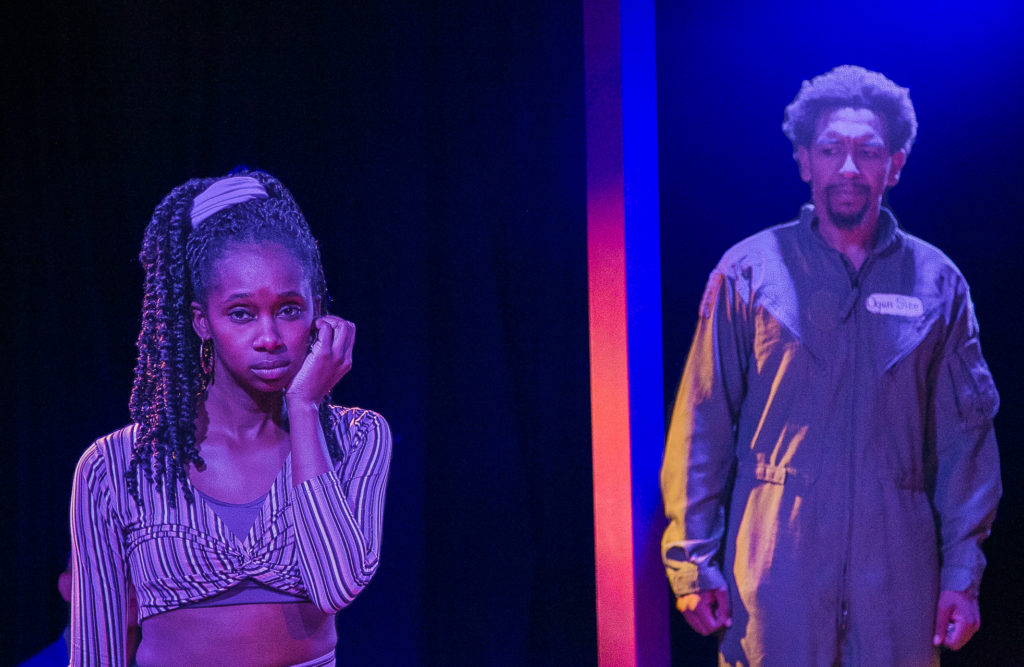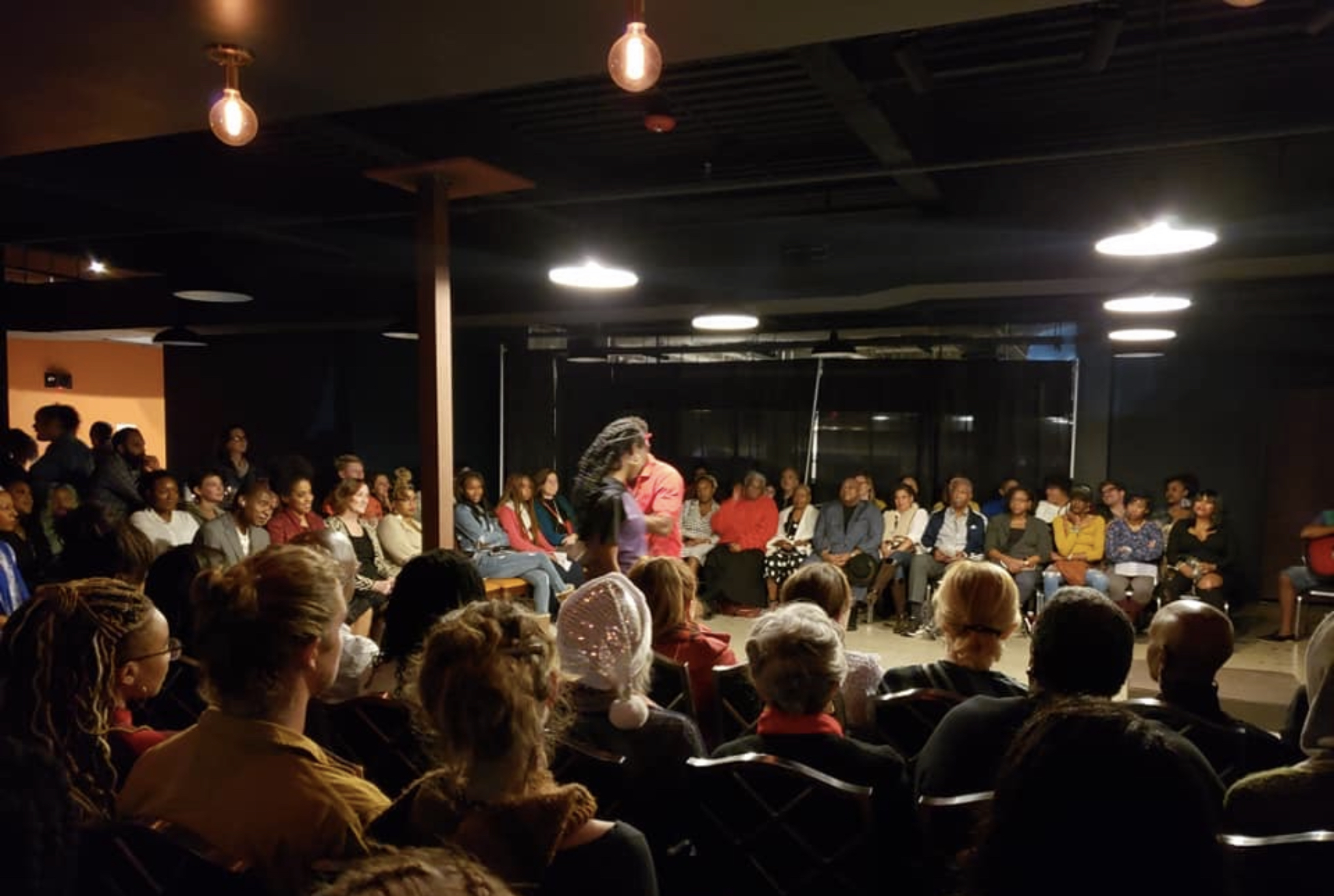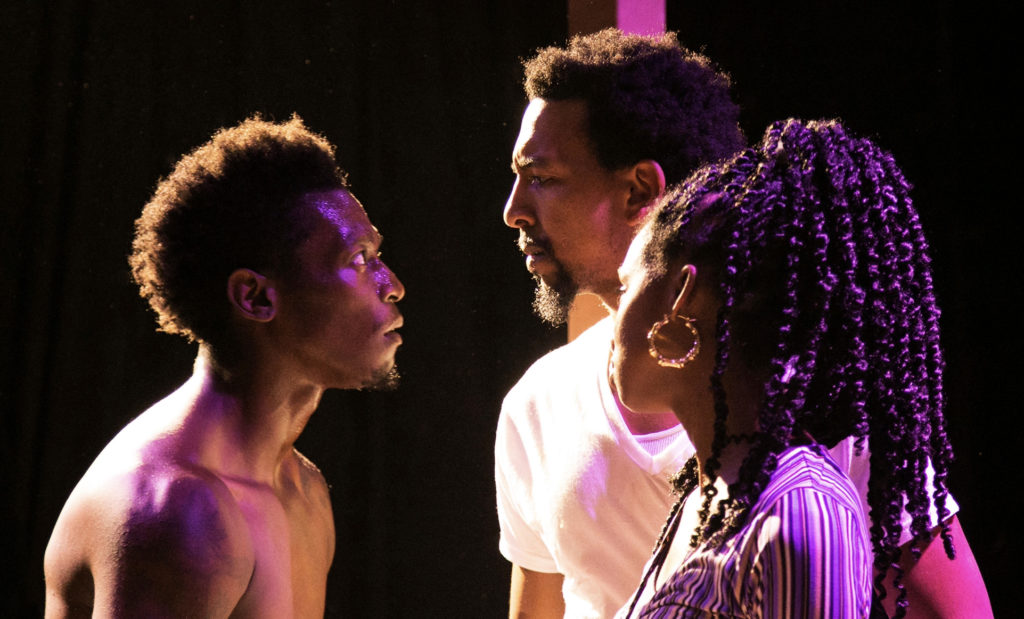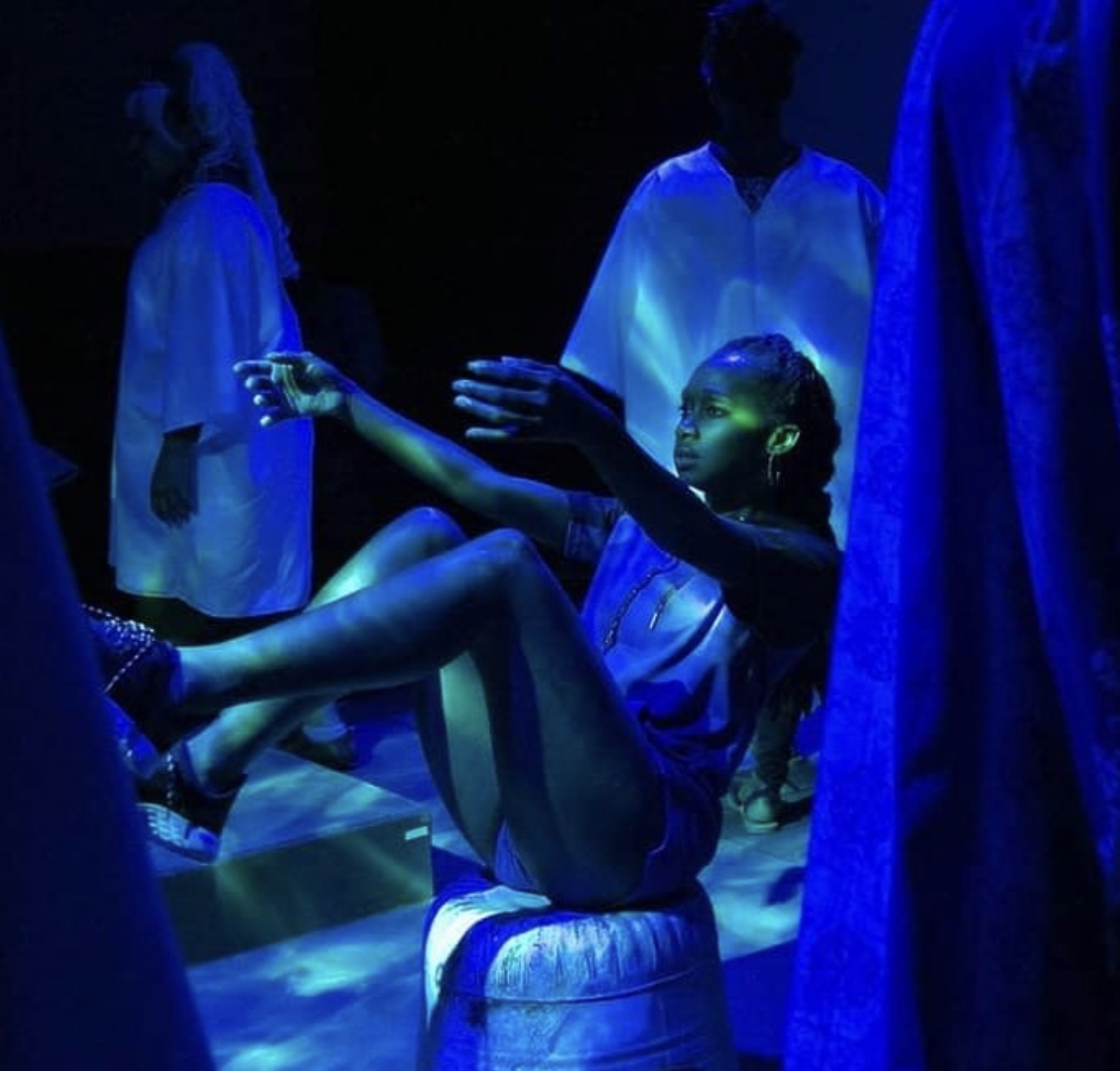
In the beginning, there was water.
And the winds of change blew the multiethnic ancestors of a new people across its surface, into Blackness, a place of chaos and endless generative possibility.
Enter, some centuries later, Tarell Alvin McCraney’s poetic play “In the Red and Brown Water,” which closed a nine-show run with an encore performance at the Pythian in New Orleans’ Central Business District.
Produced by No Dream Deferred, a non-profit theater company founded by India Mack and Lauren E. Turner, “In the Red and Brown Water” is the first show of their inaugural season.
If their debut is any indication, No Dream Deferred stands to become a leader in local theater and a formidable force in the region’s arts landscape, not only for the quality of the work they produce but for the way the narratives they choose speak to a mid-gentrification, climate crisis-facing New Orleans in a way that no other theater company is.
After her mother’s death, the lead character Oya (Mack) navigates the winding road of young womanhood from her porch, where she sits atop a turned-over washbasin, gazing simultaneously into and past the courtyard of the public housing development in which she lives.
She has traded running – her ticket out of the ‘hood – for daydreaming, mobility for the world of ideas, a longing for something beyond what the projects can offer for a longing for what the projects seem to offer everyone but her – parenthood.
A love triangle emerges between Oya, the passionate and unpredictable Shango (Martin “Bats” Bradford), and the industrious and gentlehearted Ogun Size (Rodney Graham). With unresolved sorrow for the death of her mother, mounting frustration at her inability to conceive, and the revelation that Shango has impregnated Shun (Ariel Lucious), Oya spirals.
“In the Red and Brown Water” offers blood, death, sex, confusion – the four things that, when in our possession, Black critics least like the white gaze to land upon. But as in McCraney’s Oscar-winning film Moonlight, “In the Red and Brown Water” artfully avoids pity or self-congratulation.
There are no moralist overtures, no condemnation or exemplary conduct – only what is: People making choices and parsing through their consequences. The responsibility of onlookers is to get out of their way.

Turner adapted the play, originally set in a fictional Louisiana town, to a New Orleans public housing development at the turn of the 21st century. The characters are named after orisha, historical figures of pre-colonial West Africa who, believed to be sent as guides to humanity, were deified as personifications of the forces of nature – the rash justice of lightning, the nurturing fury of the ocean, the sweet luxury of the river.
Bradford performs Shango to excess (which the bold, strategic warrior orisha of lightning and fire would have no other way), bolting onto stage in army fatigues and outfits of red and white, Shango’s preferred colors. He rattles Oya with his sudden entries and departures and the audience with his colorism (he repeatedly notes a preference for “light skinned girls”) and sexually explicit comments.
Glaspy’s playful and exacting Elegba, the childlike and wise messenger god, demands laughs from the audience just as he demands candy from Oya’s mother Mama Moja (Stacye Mackey).
Mack’s gentle and fearless Oya, the goddess of the wind, orients our attention with an untraceable power.
As they did with Shango, costume designers Janese Galathe and Dana Leon dressed each character in the colors traditionally associated with the orisha whose name they bear – Oya wears purple, Elegba red, Mama Moja blue and white, Ogun Size green.
Together, all the elements, all the characters, create perfect balance in spite or perhaps because of the good and bad of their behavior.
The island stage, surrounded on all sides by audience and flush to the ground, intensifies a sense of intimacy between the audience and the characters. The audience shares the same floor with Oya and her neighbors, these gods in the flesh, feeling the reverberations of their movements beneath our feet.

The minimalist set design (Kevin Griffith) invites the audience to conjure the image of New Orleans’ bygone brick, two-story housing developments – which were replaced by pastel-painted mixed-income housing and given culturally incomprehensible names like Harmony Oaks and Columbia Parc.
Setting the play in a public housing development that we’ve watched be disappeared, Turner’s adaptation of “In the Red and Brown Water” is haunted by the question: What if god were one of us who is no longer? Or perhaps more directly, how would we feel about displacement and gentrification if we saw god in a black woman receiving public assistance, the most vulnerable to the tides of gentrification?
In 2007, City Council voted to demolish the remaining public housing developments, following a national trend that, theoretically, would deconcentrate poverty and result in the upward economic mobility of the projects’ former inhabitants.
The St. Thomas development, in the Tenth Ward, had already been demolished and reconfigured in 2000 – permanently displacing four in five former residents. Nonetheless, it was touted as an example of what was possible.
Proponents of the demolition, mostly non-residents, threw around stereotypes of hardened criminals and the welfare queens who harbored them in City Council chambers. Public housing residents, they said, had become too comfortable, neglecting opportunities to purchase homes so that they could, instead, continue to live off of the public good will.
City Council assured the public that an equal number of affordable housing units would be built, though scattered.
The Housing Authority of New Orleans’ waitlist is currently 30,000-plus names long. According to HousingNOLA’s 2019 report, public and private developers not only failed to meet the affordable housing development goal in 2018 and 2019 but took 129 and 191 units off the affordable market each respective year.
That same report states that, in order to afford a modest two-bedroom at market rate, a renter who earns Louisiana’s minimum wage would have to work 107 hours per week.
The demolition of public housing is often placed along a “post-Katrina” timeline, a decision only made possible in the wake of the wind and water, a decision made possible by natural disaster.
It’s consistent with a larger historical imaginary that casts Black people’s relationship with nature as adversarial. Our ancestors were, after all, trekked through the forests of the African interior to an ocean some had never seen before, before being carried by that ocean to a geographically, socially, and culturally unrecognizable place where they were forced to work the land until their deaths.
In the process, their relationships with those forces of nature that they’d deified expanded. It wasn’t a matter of good and bad – the tradition teaches that there’s value to be gleaned even from that which is meant to harm, but now they knew something about the saltwater and the sweetwater, the wind, the fire, the forest, the iron that they couldn’t have known before. A new religion is formed.
By placing these forces of nature incarnate into pre-Katrina public housing developments and before a post-Post-Katrina audience, Turner exposes this relationship between environmental racism and gentrification. Displacement and gentrification exist along a continuum of ecological violence that shapes Black people’s access to and mobility within the outdoors.
“In the Red and Brown Water” left me wondering: How might the forthcoming rupture of these characters’ community, which we’re living in the aftermath of, impact them? When his auto shop becomes an “art garage,” might Ogun’s hard work that propels progress give way to predation (as does happen in the patakis, the traditional stories of the orisha)? When Shango is unable to find a living wage to care for his growing family in a tourism-driven city that is not hospitable to historic Black residents, might his fiery sense of justice lead to acts of “senseless violence”?

Gods don’t need saving, sure. But our choices, even those that seemingly have nothing to do with them, impact the way that they flow, strike, settle, blow. Oya spirals because economic marginalization leaves her with no options, the mobility that is her birthright has been made impossible.
No, gods need not our pity, but as New Orleanians, wedged between bodies of water as we are, it’s hard to ignore that spiraling wind begets mass destruction. The longer it’s staid, the more fierce its display of power.
